#zenaida doves
Text




[ID: Four photos of a mourning dove sitting on a wire, with a blue cloudly sky behind it. In the first two photos, the mourning dove is a dark silhoette, with its long tail and its feathers slightly ruffled.
In the third and fourth pictues, the camera has changed angles so that the sunlight is now shining on the dove, showing its light grey-tan feathers, and large eye. End ID.]
psa: these photos are public domain because I hate capitalism :) feel free to use for icons, field guides, art, or anything else you'd like!
#Rjalker takes pictures#birds#mourning doves#columbidae#pigeons and doves#doves and pigeons#doves#dove#Zenaida macroura#Zenaida#zenaida doves
1 note
·
View note
Text
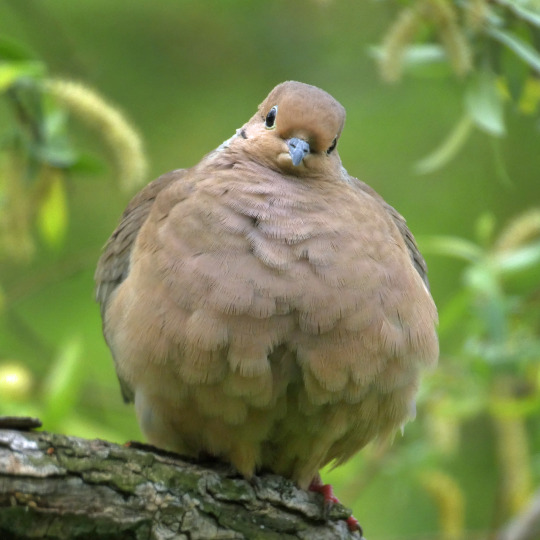
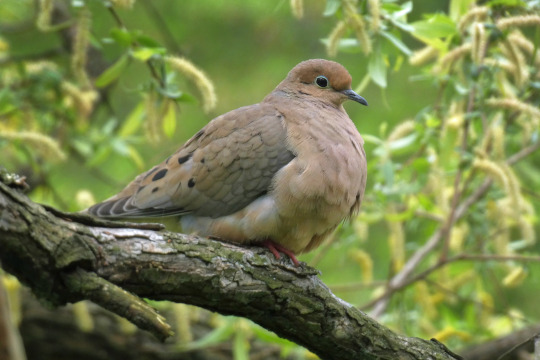
Mourning Dove (Zenaida macroura)
May 3, 2023
Southeastern Pennsylvania
#bird#birds#photographers on tumblr#mourning dove#Zenaida macroura#birdblr#birblr#birb#birbs#borb#borbs#nature#animals#ornithology
2K notes
·
View notes
Text

Mourning dove / huilota común (Zenaida macroura), nesting in an ornamental cherry tree, Sierra Vista, Arizona.
178 notes
·
View notes
Text

Mourning Dove
159 notes
·
View notes
Text

Zenaida dove (Zenaida aurita)
Part of a collection of watercolor images by "M. Rabié" for St. Domingue Oiseaux. Dated 1766.
Internet Archive
84 notes
·
View notes
Photo

White-winged Dove (Zenaida asiatica)
© Daniel Jauvin
484 notes
·
View notes
Text
BOTD: White-winged Dove
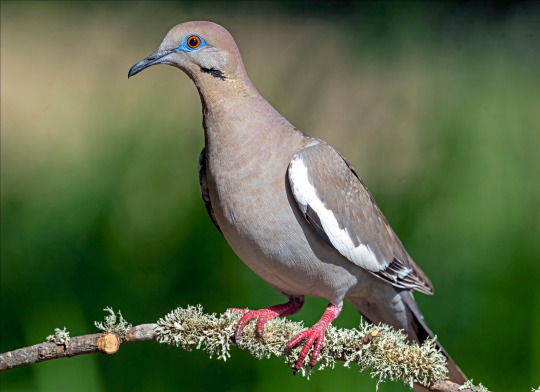
Photo: Doug Greenberg
"Related to the Mourning Dove, but a larger and bulkier bird, the White-wing is mainly a summer resident in the southwestern states. It is abundant in some regions, and streamside groves or desert washes may echo with the crowing calls of males on spring mornings. In some desert areas, this dove often feeds on the fruits of cactus, and visits their flowers for nectar; it is an important pollinator of the giant saguaro cactus."
- Audubon Field Guide
#birds#white winged dove#birds of north america#north american birds#doves#birds of the us#birds of mexico#birds of central america#birds of the caribbean#birding#bird watching#birdblr#birblr#bird of the day#Zenaida asiatica
37 notes
·
View notes
Text

aparently a dove decided to make her home on top of one of our plantpots?? and she has two little eggs there already????
#this is a white-winged dove (zenaida asiatica) btw#they usually make their nests in very high places like cactus big trees and on top of buildings#so i understand why she choose that spot#very high from the floor#and from the cat#i talk#bird
16 notes
·
View notes
Text


[ID: two pigeons, the first, the Mourning dove, pale brown with black spots on it's wings perched on a wooden post. the second, the Zenaida dove, red-brown with black and white wing spots and purple on its neck walks on a ledge]
26 notes
·
View notes
Text

8 notes
·
View notes
Text
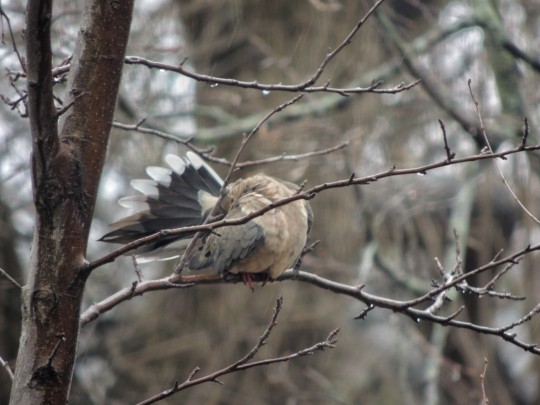
A mourning dove taking a shower in early April rain :)
2024
7 notes
·
View notes
Text




Mourning Dove
Virginia, February 2024.
7 notes
·
View notes
Photo

White-winged Dove (Zenaida asiatica)
© Daniel Jauvin
88 notes
·
View notes
Text
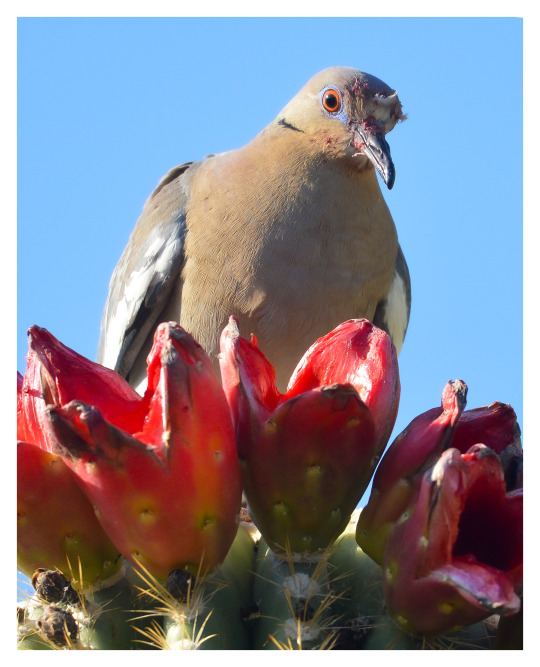
White-winged dove / paloma alas blancas (Zenaida asiatica) feasting on ripe saguaro fruit, at Desert Botanical Garden, Phoenix, Arizona.
#photographers on tumblr#white-winged dove#Zenaida asiatica#saguaro#saguaro fruit#Carnegiea gigantea#Desert Botanical Garden#Phoenix#Arizona
188 notes
·
View notes
Text
Mourning Dove (Zenaida macroura)

"Pretty and I love them"
Other names include: American mourning dove, the rain dove, turtle dove (not the popular one), as well as Carolina pigeon and Carolina turtledove.
This is one of the most populous birds in North America, and is a popular game-bird. Typically up to 20 million are taken annually as game, and their numbers continue to remain stable despite that- wild! Part of this is that the Mourning dove is a prolific breeder, and can have up to six broods of two young in the warmer portions of their range.
Let me tell y'all... these are the softest things in the world. They're incredibly hard to hold in hand due to the fact their neck can scrunch up real short, they've got itty-bitty legs to hold on to, and the softness of their feathers makes them very slippery. Adding onto that, mourning dove will lose some of their body feathers as a way to escape predation. It works almost like slipping your hand from a glove, with the shed feathers becoming stuck in a predators mouth or grasp while the bird wiggles out and flies away. This can make a dove escape look fairly dramatic.
Source:
Image source: eBird - Nancy Christensen
26 notes
·
View notes
Text
A Short List of Doves In The USA That You May Confuse With Each Other
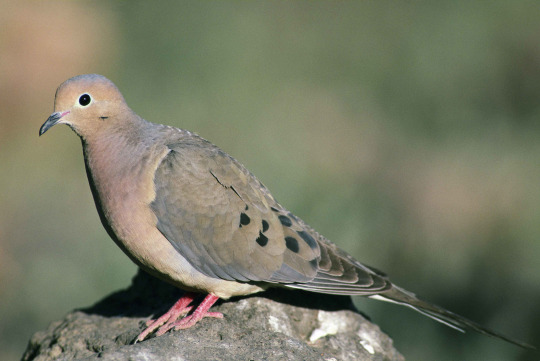
Mourning Dove Zenaida Macroura
Year-round native across most of the USA, with breeding populations up into Canada, and non-breeding populations extending into Mexico. Least Concern, plentiful, and often hunted for meat though hunting does little to lessen it's numbers. There is often a whistling sound heard when the mourning doves land and take off - it is not a call but rather a sound made by the feathers of the wings themselves.
Distinguishing features: Distinctive mournful woo-OOO-wooo, wooo, wooo call, occasionally, clean pale coloring of head and neck, darker wings with dark spots. Click here to hear!
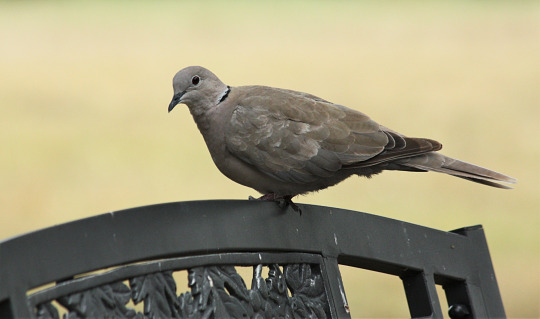
Eurasian Collared Dove Streptopelia decaocto
European and Asian native, was introduced to North America, Japan and the Carribean. It is invasive in USA.
Distinguishing features: A quick, rolling sort of goo-GOO-goo call, similar to a rock dove coo. Also, they make a loud HAH sound when taking off or landing. Click here to hear!
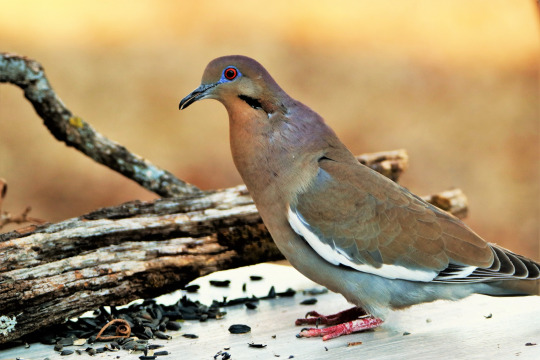
White-Winged Dove Zenaida asiatica
White winged doves are native to the very southern parts of the USA and to Mexico and the Carribean.
Distinguishing features: Bright red eye surrounded by blue skin, brownish feathering with a dark stripe below the cheek on each side of the nect, the bold white stripe along the leading edge of the wings.

Common Ground Dove Columbina Passerina
Small dove species native to the southernmost parts of the following: California, Southern Texas, Louisiana, Mississippi, Alabama, Georgia and Florida in the USA, most of Mexco and Central America, and the northern parts of South America including Colombia, Venezuela, Guyana, small parts of Peru and Ecuador and parts of northern Brazil.
Distinguishing features: Small size, overall brownish coloring with dark mahagony primaries and dark spots that glisten blue on the wings. Similar in some ways to the Mourning Dove but has a much shorter tail and is smaller.
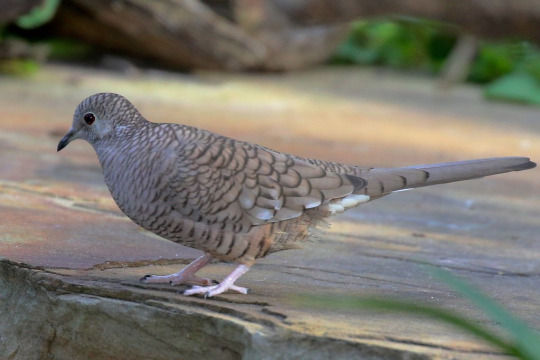
Inca Dove Columbina Inca
Native to southern parts of California, Arizona, New Mexico and Texas, Mexico, and parts of Central America.
Distinguishing Features: Pale coloring overall with a distinctive "scale' like edge on the feathers of the body. Noticeably smaller than the well known Rock Dove/Pigeon, and shorter overall than the mourning dove.
#dove#doves#columbina#zenaida#usa#doves of north america#doves of south america#i guess#bird#birds#bird info
177 notes
·
View notes